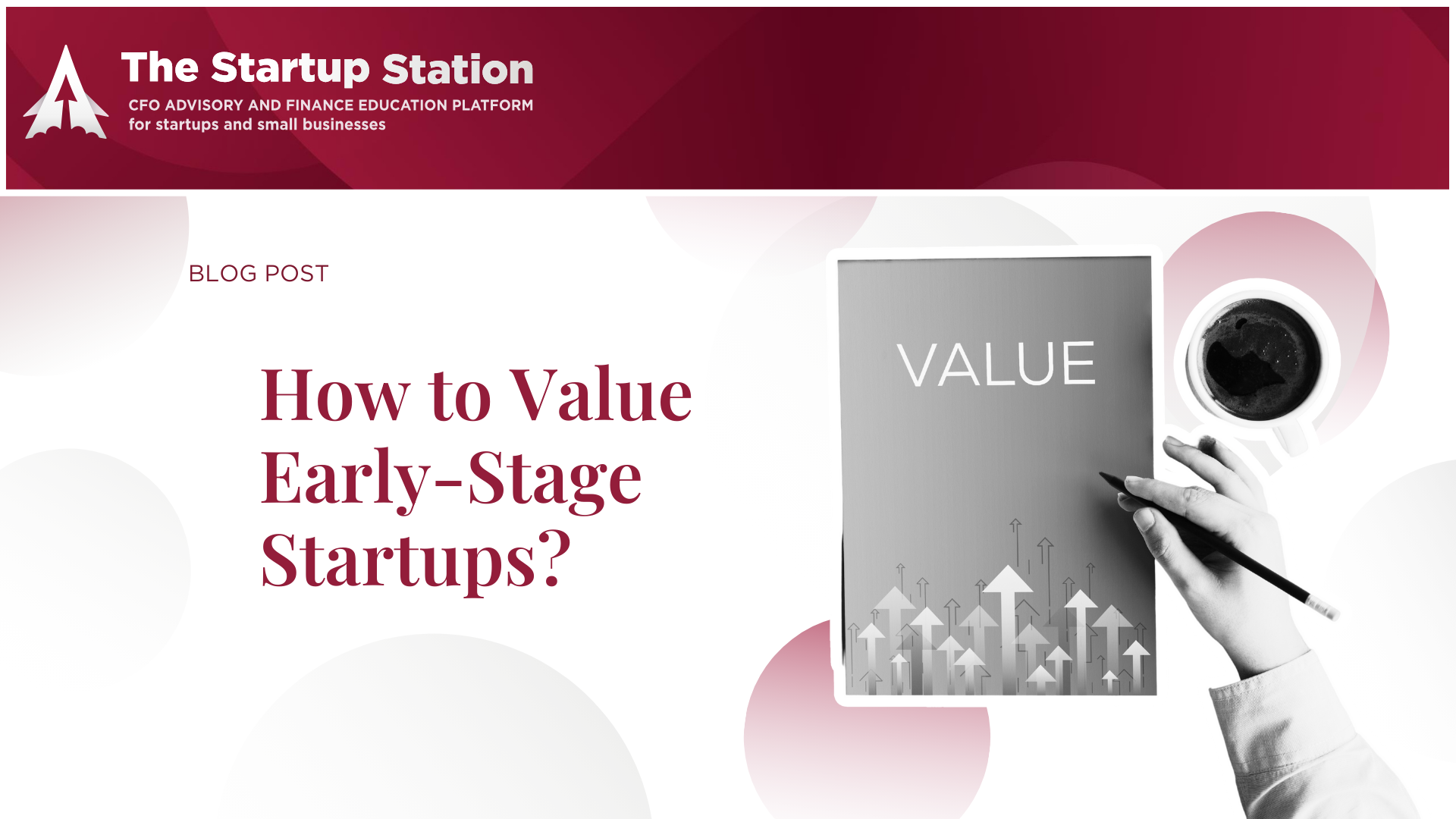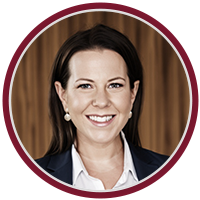


All qualitative approaches are based on some sort of scorecard. Each scorecard has its own unique set of attributes. Every attribute has a monetary range assigned to it as well as a weight that signifies the importance of each attribute. The value of a startup, based on this scorecard, will be the sum of the weighted values of all of the attributes.
While this method is easy to use and requires no finance knowledge, it also, unfortunately, for a startup founder, has three issues.
Therefore, a founder has very little power over determining the valuation of his company if a scorecard methodology is used. We recommend using this methodology only if there is not enough data for a quantitative approach.
Let’s assume we have a scorecard with four attributes: product readiness, traction, track record, and market size. All attributes are equally important and are thus equally weighted. Further, the value for each attribute can range anywhere from $0 to $500K.
Thus, under this scorecard, the maximum company valuation can only be $2M.
This method allows you to assess the financial feasibility of your business plan and represents a more accurate value of your company. This is good news for you because as a founder, you want to give away just the right amount of equity for the amount of money that you are raising.
That said, the quantitative approach is more difficult because it is based on a financial forecast that needs to be created. In order to create your financial forecast, you need to figure out your pricing strategy, your go to market strategy, and your cost strategy for the next five years.
Once you develop your forecast and you determine how much money your company will be generating, you can then use a simplified version of a traditional valuation model, called the venture capital method, in order to figure out the value of those cash flows, or the value of your company.
Victoria Yampolsky, CFA, is the President and Founder of The Startup Station, a comprehensive financial resource for early stage startups. She evaluates the financial feasibility of business models and specializes in the financial modeling and valuation of pre-revenue companies. She also created a finance curriculum for early stage founders and launched The Startup Station’s educational program in 2015. Since then, more than 1,000 founders have attended her online and in-person finance classes and learned the basics of financial modeling, valuation, and startup financing.
Previously, Victoria worked for the Deutsche Bank Research Department and performed IT consulting for CapGemini’s Financial Services Division. Victoria holds a Bachelor’s Degree, Cum Laude, in Computer Science, with minor in Mathematics, from Cornell University and an MBA, with honors, from Columbia Business School. Victoria is also on the Advisory Board of the CIS Department of Cornell University.
We are happy to talk to you. Book a FREE 30-min consultation now by pressing the button below and, as a bonus, we will send you a COMPLIMENTARY financial health checklist.

Agustin Iraola is an attorney at ALVK LAW PLLC, a New York–based law firm dedicated to supporting entrepreneurs, startups, scaleups, and investors seeking to expand or develop their businesses in the United States. His practice focuses on corporate structuring, governance, technology and commercial transactions, and venture financing. He previously served as Legal Counsel and COO at Openbit, a tech startup in the real-world asset tokenization space, and as Chambers’ Chief of Staff at an Argentine Federal Court of Appeals. Agustin holds an LL.M. in Law, Technology and Entrepreneurship from Cornell Tech and is licensed to practice in New York and Argentina.
.

Jack Nedelman joined AutomaTech at its inception, a technology distribution and representative firm based in Massachusetts, in 1995. Over nearly 28 years, Jack took on many roles as the company grew from four employees and less than one million dollars in its first year to over 50 employees and $35 million in revenue by the end of 2022.
In 2005, Jack transitioned from the technical side of the business to sales after becoming a more invested equity partner, quickly becoming one of the top performers and the number one salesperson for three consecutive years.
At the end of 2022, Jack left AutomaTech and began working as a coach and mentor for various startup companies, helping them tackle their sales and marketing challenges. Jack has collaborated with organizations such as Build.Org, MassChallenge, Social Enterprise Greenhouse, EForAll, and has worked on various other programs.
Jack genuinely enjoys sharing the knowledge gained over the years and assisting individuals who are striving to realize their dreams and make the world a better place. Jack seeks to embody David Viscott’s quote: “The purpose of life is to discover your gift. The work of life is to develop it. The meaning of life is to give your gift away.”
.

Lysle Wickersham, founder of BRANDThink, LLC, is a veteran brand and positioning strategist who partners with startups and early-stage companies to align stakeholder goals with scalable go-to-market strategies. He supports visionary founders across industries to lower risk, build scalable and sustainable ventures, and get funded while helping to reduce the cost of capital. With a cross-disciplinary skillset (investment banking, management consulting, & brand development), Lysle’s expertise includes investor readiness, brand and business strategy, competitive positioning, and go-to-market strategy to assist founders in raising capital, sustainably scale, and grow long-term equity value.
.

Aishwarya Nallapillai is a VP at the Jefferies Family Office, where she invests capital on behalf of the senior partners at the Firm into early-stage companies at the seed to Series A stages.
.

Kange Kaneene is a professional with experience sourcing, investing in and mentoring early-stage startups. She is currently Venture Partner at Hearst Level Up Ventures. As the VP of SAP.iO North and Latin America and Caribbean, she led SAP’s startup accelerator program in the region with a team of 7 and managed 69 startups that have resulted in 4 exits and 1 unicorn. 67% of the startups are led by underrepresented individuals and the 69 startups have raised $600M+ in venture capital collectively.
Kange is also an active angel investor with a focus on access to opportunity. She is a member of Pipeline Angels and The RainMakers Collective, two private communities that provide capital and mentorship to female entrepreneurs who are creating positive change in the world.
With over 16 years of experience in the enterprise software industry, she brings operational experience from roles in business development, sales operations and corporate strategy. In addition, she has a deep network of professionals who lead the innovation teams at Fortune 500 companies that has led to millions of dollars in pilots for startups in her network. Finally, she is the chair of the board for KIPP NYC, a network of public charter schools focused on education parity, a 7K+ organization with $200M+ operating budget.
Kange has a Bachelor of Science in Computer Science from the University of Michigan and a Master of Business Administration from New York University Stern School of Business.
.
![]()
York Effect is a founder-focused marketing program that offers practical, stage-specific guidance to drive budget-wise execution, faster growth, and investor readiness.
.

The platform provides access to a complete journalist and editor database, AI-powered pitch generation, and campaign tracking tools. It’s designed to help startups gain media coverage quickly and boost brand awareness. The winners will get:

.
 “Coming in with no formal background in financial modeling or accounting and as a first-time founder, I needed exactly this program. Victoria’s financial training covered startup accounting, investor-ready financials, key metrics, and break-even across common business models, presenting and analyzing financials, and term sheets and valuation, which finally made the numbers click. I built a working bottoms-up forecast, clarified our unit economics, and can now speak to the model with more confidence. Jeanne’s investing expertise clarified what investors actually care about, from pitch deck structure to effective cold outreach. Demo Day prep and the Demo Day pressure-tested the narrative and produced actionable feedback. The broader network, from go-to-market to legal, was generous and will remain a source of support. I’m leaving with a credible model, a sharper deck, a focused target list, and a clear plan I’m already executing!”
“Coming in with no formal background in financial modeling or accounting and as a first-time founder, I needed exactly this program. Victoria’s financial training covered startup accounting, investor-ready financials, key metrics, and break-even across common business models, presenting and analyzing financials, and term sheets and valuation, which finally made the numbers click. I built a working bottoms-up forecast, clarified our unit economics, and can now speak to the model with more confidence. Jeanne’s investing expertise clarified what investors actually care about, from pitch deck structure to effective cold outreach. Demo Day prep and the Demo Day pressure-tested the narrative and produced actionable feedback. The broader network, from go-to-market to legal, was generous and will remain a source of support. I’m leaving with a credible model, a sharper deck, a focused target list, and a clear plan I’m already executing!”
CEO and C0-Founder, Rewrite Bio
 “The bootcamp was a great opportunity to refresh core financial concepts and start grounding my vision in the real startup world. It gave me the clarity and tools to begin thinking more strategically about fundraising. What truly stood out was the team’s energy, their enthusiasm and passion for this ecosystem and their continued motivation.
“The bootcamp was a great opportunity to refresh core financial concepts and start grounding my vision in the real startup world. It gave me the clarity and tools to begin thinking more strategically about fundraising. What truly stood out was the team’s energy, their enthusiasm and passion for this ecosystem and their continued motivation.
The program helped me prepare for the Change Now pitch competition and provided clarity on the next steps in my startup’s journey. It is a great resource for any founder preparing to fundraise or fundraising!”
CEO and Founder, Snova
 “It was amazing being a part of the Startup Station Fundraising Bootcamp. Working with financial modeling guru Victoria helped level up our confidence and industry knowledge on Birthvue’s financial model and engage with investors. She found time to ensure our model works, and most importantly, makes sense! Every session gave us new insights and connections while elevating the work we are doing, leading to us winning their pitch competition. Working with Victoria on financials and Jeanne on fundraising strategy helped Birthvue take a step forward in the right direction. I highly recommend it to any founder going through or preparing to fundraise – it was a game changer for us.”
“It was amazing being a part of the Startup Station Fundraising Bootcamp. Working with financial modeling guru Victoria helped level up our confidence and industry knowledge on Birthvue’s financial model and engage with investors. She found time to ensure our model works, and most importantly, makes sense! Every session gave us new insights and connections while elevating the work we are doing, leading to us winning their pitch competition. Working with Victoria on financials and Jeanne on fundraising strategy helped Birthvue take a step forward in the right direction. I highly recommend it to any founder going through or preparing to fundraise – it was a game changer for us.”
CEO and C0-Founder, Birthvue
 “Going through the Fundraising Camp with Victoria and Jeanne was a much needed boost in my entrepreneurial journey. I really liked how the topics flow was organized covering, on the one hand, all the needed knowledge on the financial side and business plan building and, on the other hand, a variety of nuanced aspects related to how to approach the fundraising process itself. Deep financial knowledge and expertise of Victoria coupled with Jeanne’s practical experience as an investor was a perfect blend which allowed us to address all our questions and get prepared for the fundraising journey. Within two weeks of the bootcamp ending, we secured our first angel investment. I am grateful for this opportunity to learn so much in such a short period of time!”
“Going through the Fundraising Camp with Victoria and Jeanne was a much needed boost in my entrepreneurial journey. I really liked how the topics flow was organized covering, on the one hand, all the needed knowledge on the financial side and business plan building and, on the other hand, a variety of nuanced aspects related to how to approach the fundraising process itself. Deep financial knowledge and expertise of Victoria coupled with Jeanne’s practical experience as an investor was a perfect blend which allowed us to address all our questions and get prepared for the fundraising journey. Within two weeks of the bootcamp ending, we secured our first angel investment. I am grateful for this opportunity to learn so much in such a short period of time!”
CEO and Co-Founder, DetellaDX

Victoria Kammerath is a tech enthusiast attorney with a surgical attention to detail and a practical mindset, bringing a diverse background in banking and finance, corporate law, and technology law to her work. She is passionate about the intersection of law and technology and has led key negotiations related to financings, joint ventures, strategic alliances, startup development, and venture capital fundraising.
Before founding ALVK LAW, Victoria worked for Clifford Chance US LLP’s Asset Finance Group, becoming a member of the team that advises on aircraft acquisition and financing structures—including capital markets issuances, leasing, asset-based lending, and restructurings. Prior to that, she worked with Eisenberg & Baum’s Artificial Intelligence Fairness and Data Privacy Practice Group as a project manager for AI research and technology development projects.
In Argentina, her legal career developed in both private and public roles. She served as In-House Counsel at HSBC Bank, where she gained experience in corporate law, data privacy, and financial regulations. She also served in various public agencies, including as Chief of Legal Staff for the Attorney General of Buenos Aires State, where she provided direct counsel to the Attorney General on civil, commercial, and regulatory matters, while co-leading the organization’s digital strategy.

Lindsey Fine helps startups transform founder-led sales into structured, scalable growth engines. With nearly 20 years of experience at industry giants like Salesforce, Meta, Dropbox, and Amazon, she has built and optimized sales strategies at every stage—from early growth to global scale. As part of the sales teams pre-IPO at Facebook (now Meta) and Dropbox, Lindsey gained firsthand experience in high-growth environments, learning what it takes to drive predictable revenue and long-term success in rapidly scaling companies.
Drawing on a proven track record in founder-led and early-stage sales, Lindsey provides call coaching, ICP definition, deal strategy, and process scaling—giving founders the tools to sell with confidence, navigate complex deals, and build repeatable sales motions that grow with their business.
As a recognized thought leader for Sales Assembly and a keynote speaker, Lindsey has shared her expertise on sales strategy, founder-led selling, and go-to-market execution. She continues to contribute to the broader sales and startup community through mentorship, writing, and industry events.
For founders looking to transition from scrappy selling to sustainable sales growth, Lindsey brings the expertise, strategy, and hands-on coaching to make it happen.
 “If you’re raising capital and want to shine when pitching to investors, I highly recommend you choose Victoria Yampolsky and the Startup Station as your resource for high performance results. Victoria is extremely well versed in all aspects of raising capital and the startup landscape. She provides clients with outstanding tools, applicable advice and thoughtful insights to support their fundraising efforts.
“If you’re raising capital and want to shine when pitching to investors, I highly recommend you choose Victoria Yampolsky and the Startup Station as your resource for high performance results. Victoria is extremely well versed in all aspects of raising capital and the startup landscape. She provides clients with outstanding tools, applicable advice and thoughtful insights to support their fundraising efforts.
Best of all, she has the unique ability to share complex information in delicious, easily digestible portions. Victoria will leave you feeling confident about all your financial numbers and valuation, which will translate into a successful pitch to investors.”
Startup Founder, 4x Founder, LiveStream Host
 “Victoria is a rare find in the startup world. She’s brilliant with startup financial strategies and has this no-nonsense work ethic that proves to deliver results. Victoria worked with a participant of 2020 Startups, a startup founder, and within a couple of months the founder raised capital. Victoria has done several workshops and speaking engagements at 2020 Startups and is always insightful and held in the highest regard by the audience.”
“Victoria is a rare find in the startup world. She’s brilliant with startup financial strategies and has this no-nonsense work ethic that proves to deliver results. Victoria worked with a participant of 2020 Startups, a startup founder, and within a couple of months the founder raised capital. Victoria has done several workshops and speaking engagements at 2020 Startups and is always insightful and held in the highest regard by the audience.”
Managing Director, 2020 Accelerator, Venture Capital | Economic Development
 “These workshops are extremely useful for all of us. Victoria is the kind of presenter/professional who inspires confidence. I’d recommend her to any startup trying to figure out how it needs to be organized, capitalized, and operated to have a good business model going forward. She focuses on fundamentals, which, too often, are sorely lacking in our ecosystem, and she knows her stuff backwards and forwards”
“These workshops are extremely useful for all of us. Victoria is the kind of presenter/professional who inspires confidence. I’d recommend her to any startup trying to figure out how it needs to be organized, capitalized, and operated to have a good business model going forward. She focuses on fundamentals, which, too often, are sorely lacking in our ecosystem, and she knows her stuff backwards and forwards”
Founder, LanguageHero
 “Victoria Yampolsky is THE essential tool for any startup looking to present a viable financial model! If you are a founder who, like me, lacks the business/finance background – YOU NEED HER. If you are looking to show your investors a serious plan for growth and capitalization – YOU NEED HER. Victoria’s thoroughness and dedication will ensure no stone goes unturned in the FOUNDATION of your BUSINESS. And to top it all, she explains everything with such calm & clarity, it is an absolute delight to be working with her.”
“Victoria Yampolsky is THE essential tool for any startup looking to present a viable financial model! If you are a founder who, like me, lacks the business/finance background – YOU NEED HER. If you are looking to show your investors a serious plan for growth and capitalization – YOU NEED HER. Victoria’s thoroughness and dedication will ensure no stone goes unturned in the FOUNDATION of your BUSINESS. And to top it all, she explains everything with such calm & clarity, it is an absolute delight to be working with her.”
Founder, Wakefully
You may not communicate or submit any content or material that is abusive, vulgar, threatening, harassing, knowingly false, defamatory, or obscene or otherwise in violation of any law or the rights of others.
You further confirm that you understand that all Fundraising Bootcamp materials, including, without limitation, words, videos, voice and sound materials, documents, images, and all other information and communications accessible to you during the program, are the intellectual property of The Startup Station, Inc.
You are granted a limited, revocable, non-transferable license for personal, non-commercial use only.
You may not republish, reproduce, duplicate, copy, sell, display, disclose, distribute to any third party, or otherwise use any program materials for commercial purposes or in any way that earns you or any third-party money (other than by applying them generally in your own business).
You are specifically prohibited from independently organizing and running any programs using the Fundraising Bootcamp materials, unless you have obtained The Startup Station’s prior express written consent to run such programs under the Startup Station brand.
All rights not expressly granted in these terms are reserved by The Startup Station, Inc.
You agree that the Fundraising Bootcamp has not made and does not make any representations about the earnings or results you may receive as a result of your participation in the Fundraising Bootcamp, and understand that The Startup Station cannot and does not guarantee that you will achieve any particular result or earnings from your use of the program.
 Liz Wald has 25+ years’ experience building company operations and mobilizing global teams in emerging, disruptive industries.
Liz Wald has 25+ years’ experience building company operations and mobilizing global teams in emerging, disruptive industries.
Whether opening the original Nike Town that changed the face of retail, working in the ‘You’ve got mail!’ days at AOL, building and selling a strategy consulting firm during Internet 1.0, or being part of early leadership teams and building global operations at Etsy and Indiegogo, Liz has always leveraged innovative technologies and business models to upend existing industries and open new markets.
Liz helps leaders operationalize their vision, scale their companies in their growth and go-to-market phases and has a special passion for all things global context.
.

Wade in an entrepreneur, founder, and revenue leader. Most recently, he had two successful exits: one SaaS and one marketplace. Before that, he led revenue organizations for two of the fastest-growing companies on the Inc. 500 list, ranked 72nd and 23rd. With deep expertise in go-to-market (GTM) strategies, leadership development, and building high-performing teams, he specializes in scaling businesses and developing people.
Currently he helps founders and business owners of $5M-$50M companies operate and grow through his Co-Founder On Demand and Done-For-You Revenue Operations services. The primary focus is top-to-bottom funnel improvements, talent evaluation, and leadership training, making real impactful changes. He takes the load off the founder or CEO, creating space for them to breathe, think, and plan for the future.
Of all the things he could be doing, he chooses this because he loves the journey—helping founders and owners get from where they are now to where they want to be.
 Blair Severn is the Chairman and Co-founder of enabling ideas®, a Venture
Blair Severn is the Chairman and Co-founder of enabling ideas®, a Venture
Acceleration Studio founded in 2004. The studio specializes in guiding ventures from early-stage through scaling, helping execute to achieve growth and operating income and attract investors from pre-seed to later financing rounds.
With a proven track record of driving profitable growth, Blair combines design thinking, financial expertise, and operational acumen to help companies overcome infection points and fast-track their success. His experience spans diverse sectors, including technology, clean-tech, food science, life science, financial services, consumer products, retail, media and professional services.
Before founding enabling ideas®, Blair held senior roles with BMO Financial Group’s Office of Strategic Management, as National Marketing Manager at Sony Canada, and as Head of Consumer Retail at Consumers Gas. He also serves on various boards,
currently as Finance Chair at D’Youville University.
Blair holds an MBA in Corporate Finance and Investment Banking from the University of Toronto, an HBAS in Marketing from York University, and a BA in Business and Sociology from Brock University.
 Victoria Yampolsky is a serial entrepreneur, strategic CFO advisor for numerous early-stage start-ups and expert in financial modeling and valuation. She’s a passionate advocate for female founders and fair access to capital for all.
Victoria Yampolsky is a serial entrepreneur, strategic CFO advisor for numerous early-stage start-ups and expert in financial modeling and valuation. She’s a passionate advocate for female founders and fair access to capital for all.
As the President and Founder of The Startup Station, a strategic CFO advisory firm and financial education platform for startups and small businesses, she has collaborated with over 150 founders across 15 industries, assisting them in raising more than $50M in venture capital funding. Hundreds of entrepreneurs worldwide took The Startup Station’s courses on accounting, financial modeling, valuation and startup finance.
Victoria founded PowerUp Globally, a non-profit program that helps seed-level female-led ventures grow and secure their next round of funding through sales and financial training. The program aims to close the gender funding gap. PowerUp also offers the Female Founder Mindset Gym, a resilience-building program for early-stage female founders.
Before venturing into entrepreneurship, Victoria spent nearly a decade on Wall Street in Deutsche Bank Research and IT Consulting at CapGemini.
Victoria holds a Bachelor’s Degree, Cum Laude, in Computer Science, with a minor in Mathematics from Cornell University, and an MBA, with honors, from Columbia Business School.

Jeanne M. Sullivan – Investor, Advisor, Speaker – is passionate about delivering ideas – information – and inspiration to entrepreneurs and is a fierce advocate for supporting women entrepreneurs (and a few good men).
Sullivan is the CIO of Arcview Ventures, building investment platforms under the Arcview banner and Co-Founder of the Arcview Collective Fund. She is a sought-after industry speaker on how to get funded in tech and in the cannabis sector – its complex (and ridiculous set of regulations). She advises companies- showing entrepreneurs how to demystify the fund-raising process and crack the code on financing.
Jeanne has been a Women’s Leadership Board member at the Harvard Kennedy School and is an Athena Entrepreneur Fellow for Barnard College. She also served many years on the Board of Trustees of the New York Hall of Science and the Global Board of Trustees of Astia, which funds high-growth women entrepreneurs.
 Irina Sychov is an expert in voice, pitching, and fundraising and the Founder of ANIMA Women, a community supporting women in business. A five-time startup founder, she has extensive experience with family offices in London and Miami. Irina gained recognition for her dynamic presence on the British show X Factor, impressing judges like Simon Cowell, which sharpened her skills in audience engagement and self-marketing—essential tools in the business world.
Irina Sychov is an expert in voice, pitching, and fundraising and the Founder of ANIMA Women, a community supporting women in business. A five-time startup founder, she has extensive experience with family offices in London and Miami. Irina gained recognition for her dynamic presence on the British show X Factor, impressing judges like Simon Cowell, which sharpened her skills in audience engagement and self-marketing—essential tools in the business world.
As a distinguished speaker at global forums such as WEB3 Expoverse and “SHE Talks,” Irina has mentored at the Techstars accelerator in Boston. With 15 years of experience hosting international events, including Business Awards and Startup Conferences across Dubai, Monaco, London, and the USA, she has a proven ability to engage diverse audiences.
As VP of investor and public relations, she successfully raised $500K and guided Dialogue Key to its public offering in 2020. Irina served as a judge for the Startup World Cup at the Microsoft Theater in Boston in August 2024.

With a global and unique perspective on everything, Tiffany Norwood is considered one of the top innovators and tech entrepreneurs in the world. She is one of few global serial entrepreneurs and one of the first successful black female tech entrepreneurs. Her start-ups have impacted billions of people in more than 150+ countries. With a career spanning 35 years, 9 start-ups, and multiple exits, she has personally worked in more than 50 countries. Tiffany was recently named the 2022 Entrepreneur of the Year by Cornell University, the first black woman to receive this lifetime achievement award in its nearly forty-year history.
Tiffany first became a CEO while a junior at university, filed for a patent at the age of 19, licensed her first software code for a multibillion-dollar bank merger at the age of 24, and by the age of 27, raised over $670 million dollars to fund a start-up called WorldSpace.
Currently, Tiffany is transforming education and disrupting sports and healthcare, as the Founder and CEO of Tribetan, a Co-Founder of SimWin Sports, and most recently a co-founder of Elfkare. Using technology, music, video, and animations, Tribetan is teaching the world how to be more innovative and entrepreneurial for success in business, school, and life. SimWin Sports is the first-ever digital sports league platform, with tokens, online betting, and esports fantasy tournaments. SimWin announced its new platform at the 2022 SuperBowl. And Elfkare, which launched in 2023 is using an AI digital assistant to support everyday caregivers taking care of family members.
In 2020 she published her first book, Vote Like a Boss: An Entrepreneur’s Perspective on Innovation, Leadership, Creativity, Storytelling, and Voting. Making the case for voting as an important life skill.
Tiffany is a highly respected and sought after global speaker on entrepreneurship, innovation, and leadership. She has spoken around the world, including venues like the US Patent and Trademark Office, the European Parliament, Cornell University, Yale University, the Italian Parliament, the United Nations, ABC News, and many others. Tiffany is also a US Speaker on Entrepreneurship and Innovation for the US State Department.
Tiffany has a Bachelor’s in Economics with a concentration in statistics and computer science from Cornell University, where she also rowed Varsity Crew her Freshman year. She has an MBA from Harvard University.

Manuela Zoninsein is the CEO and Founder of Kadeya. Kadeya is the world’s first closed-loop beverage vending system. Our network of smart bottling stations and reusable bottles eliminates the need for single-use beverage containers forever.
Previously, she worked at Palantir Technologies in international business development focused on CPG, introducing the company to five new markets. As a serial climate entrepreneur, she has launched two businesses in the agritech space, one a data service in China, which was acquired by a partner, and one in Brazil, now that country’s largest online marketplace for smallholder farmers.
Before going into business, Manuela served as a correspondent in China, where she lived for eight years. She moved to Beijing with a Princeton-in-Asia Fellowship in 2007 and reported for Newsweek and The Engineering News-Record, covering environment, technology, infrastructure, and transportation during the cleantech revolution. She was also the dining editor of Time Out Beijing.
As an angel, Manuela has invested in over 30 women-led companies focused on sustainability through Love Zero Ventures. Until returning to Chicago summer of 2021 with her husband and son, she was involved in tech and entrepreneurship training for underrepresented communities in New York City.
Manuela holds an MBA from MIT-Sloan, an MSc from the University of Oxford, and a BA from Harvard University. She attended Evanston Township High School and is a proud Brazilian immigrant fluent in Mandarin-Chinese, Spanish, and Portuguese.

Melanie Samba is the founder and CEO of SPROXXY, an enterprise SaaS conference intelligence platform that uses AI and ML to manage corporate executives at conferences.
Prior to founding SPROXXY, Melanie served as a branding and corporate communications leader with a 20-year proven track record of developing and executing powerful strategic programs across multiple industries by managing multi-million-dollar public relations campaigns and product launches from R&D into commercialization.
Melanie’s expertise has allowed her to work on every side of the conferences business. Throughout Melanie’s career, she’s worked in-house and with agencies booking Fortune 500 execs to top-tier conferences, owned a speakers bureau and produced conferences with the largest hosting over 15k attendees. In 2023, Melanie was listed as one of the top 25 most influential leaders in commstech by PRWeek Dashboard 25.

Allison Byers is a trailblazer in the realm of equitable capital distribution. As the founder of Scroobious, her tech company is changing the startup landscape by fostering diversity through widespread connections among founders, investors, and service providers via scalable online education, community, and data-driven curation.
Before founding Scroobious, she spearheaded a medical device startup, securing nearly $10M in funding before its acquisition, and encountered firsthand the gender bias prevalent in fundraising. With over 20 years of experience in startup and tech roles, Allison stands as a seasoned entrepreneur and a catalyst for change. She co-authored California Senate Bill 54 (signed into law), pushing forward legislation that will bring transparency and accountability to the venture capital industry.
Beyond her entrepreneurial pursuits, she serves as an angel investor, Boston Co-Chair of the national non-profit All Raise, DEI task force member of the Angel Capital Association, and is a sought-after startup mentor and dynamic speaker.

Andrea Ippolito is the CEO and Founder of SimpliFed, a maternal care home platform centered on baby feeding and breastfeeding support. Andrea served as the Director of the Department of Veterans Affairs (VA) Innovators Network within the VA Center for Innovation. In this capacity, she designed and oversaw the creation of a $10.5M program that provides VA employees with tools and resources to develop innovative solutions to improve the lives of Veterans and their families.
Previously, Andrea served as a Presidential Innovation Fellow based out of the White House Office of Science and Technology Policy and General Services Administration. She pursued doctoral studies in the Engineering Systems Division at MIT, where she was the Co-Director of MIT Hacking Medicine and completed her MS in Engineering & Management.
In her entrepreneurial career centered on technology, systems, and innovation, Andrea was the Co-Founder of Smart Scheduling, an innovative application that improves access to care and was acquired by athenahealth in 2016, an Innovation Specialist at the Brigham Innovation Hub and Product Innovation Manager at athenahealth, and a Research Scientist at Boston Scientific. She obtained both her BS in Biological Engineering and Master of Engineering degree in Biomedical Engineering from Cornell University.

Lori Sokol, PhD. is President of the She Is Me Coaching Academy and the executive director and editor-in-chief of Women’s eNews, an award-winning, nonprofit news organization that reports on the most crucial issues impacting women and girls around the world and a media partner of PowerUp Globally.
As an entrepreneur, scholar, author, and mentor/coach, Dr. Sokol’s career spans over thirty years of writing, researching, teaching and coaching on such pertinent social issues as gender equality, the needs of working parents, environmental sustainability, and strides made by female professionals determined to smash the proverbial ‘glass ceiling.’ Dr. Sokol’s research has specifically focused on the media’s influence in crafting gender roles, further seeking to expose how stereotypes are created and maintained. She has published academic articles on the psychology of media, presented at numerous women’s empowerment conferences in both the USA and Asia, and served as an adjunct professor in the Psychology Departments of colleges and universities.
Dr. Sokol’s articles have been published in Newsweek, The Baltimore Sun, The Huffington Post, Ms. Magazine, and Slate, and she has been profiled in a variety of major publications, most recently in The Wall Street Journal and Forbes. She has also been featured on MSNBC, CNBC, WPIX, and Spectrum’s NY1, and she is the host of the global podcast, WOMXN UP!
Her latest book, She Is Me: How Women Will Save the World, was the recipient of the Ben Franklin Award from the Independent Book Publishers Association, and a Finalist in the International Book Awards.

Jeanne M. Sullivan – Investor, Advisor, Speaker – is passionate about delivering ideas – information – and inspiration to entrepreneurs and is a fierce advocate for supporting women investors and entrepreneurs. Sullivan is the CIO of Arcview Ventures, building investment platforms under the Arcview banner and Co-Founder of the Arcview Collective Fund. She is a sought-after industry speaker on how to get funded in tech and in the cannabis sector – its complex (and ridiculous set of regulations).
Jeanne has been a member of the Women’s Leadership Board at the Harvard Kennedy School and is an Athena Entrepreneur Fellow for Barnard College. She also served many years on the Board of Trustees of the New York Hall of Science and on the Global Board of Trustees of Astia, an organization that funds high-growth women entrepreneurs.

Divya Reddy is a mother, founder, investor and an activist working towards funding parity for female founders. She is the Co-founder of Pyrium and one of the Founding Partners of the F5 Collective. At Pyrium she is the Chief Compliance Officer and Product lead where she built a marketplace for non-accredited investors to buy equity and debt into private companies.
F5 is an early-stage fund dedicated to investing in women-founded technology companies in Australia and Asia. Building on 15 years of experience in financial services and product management, Divya being an Investment Committee member for F5 is deeply involved in the due diligence for portfolio companies by analyzing their viability to scale, determining the product market fit, researching, and understanding their markets and challenges they might face getting traction and continuing to help them succeed. She also oversees the fund strategy, performance and helps manage the fund’s operations.
Divya is also a member of the Innovation Committee at Harvard’s The AI Lab for Startups, powered by Digital Data Design(D-cube) D^3 and the Harvard iLabs. The AI Lab was created to curate and champion academic entrepreneurship for technology innovations at Harvard. As a Committee member Divya is responsible for selecting companies that will be admitted into the AI Lab and continue to mentor the founders on various aspects on their company’s growth journey.
Recently Divya completed the Harvard Business Analytics program and Columbia University’s Private Equity and Venture Capital program.
As an immigrant woman of color, through Pyrium and F5 she is working towards empowering female and diverse founders by driving change in the start-up funding ecosystem.

Kelly Ann Winget is an accomplished alternative investments expert and the founder of Alternative Wealth Partners (AWP), the first private equity firm founded and led by a millennial, openly LGBTQ+ woman. Kelly Ann has raised close to $1 billion in capital for startups, energy companies, manufacturing ventures, real estate, and other key emerging markets, including initiatives in Opportunity Zone Funds (OZF). She excels in managing diversified funds, combining smart tax strategies with community empowerment.
A nationally recognized trailblazer, Kelly Ann has been featured in The New York Times, Newsweek, Business Insider, Forbes, U.S. News & World Report, and Yahoo! Finance, among other media outlets. She is also the author of Pitch the Bitch: Grab Your Financial Future by the Bags (May 2023) and a sought-after keynote speaker and panelist who has shared her expertise at events such as Alts Expo, Women’s Venture Summit, 1640 Society Family Office Forum, and Wealthy Women Summits. Kelly partners with the WOMO Foundation (Women & Money) on its mission to build a more inclusive and prosperous tomorrow in which diverse capital fuels diverse solutions. She is also a partner and speaker with Diversity Crew.
Kelly Ann is a passionate advocate for empowering others and creating positive change through various philanthropic and commercial ventures. Alongside her thought leadership in investment equity and inclusion, she also spearheads fundraising efforts for charities that support children and families, such as Wipe Out Kids’ Cancer, and causes aiding survivors of domestic violence.
When not working, Kelly Ann enjoys traveling with her wife, spending time with family, and cuddling with her three big dogs.

Naseem Sayani is a seasoned venture capital investor with a specific focus on health tech, women’s health, and financial services. Over the last seven years, she has led investments as a VC and as an angel into 30+ pre-seed and seed-stage companies led by ambitious female founders. She invests with a specific focus on solutions that can unlock women’s spending power and expand the 2% of venture capital that currently goes to female founders.
Naseem’s investing and business-building experience comes from 20+ years in executive leadership roles across management consulting, agency services, venture incubators, a corporate venture capital firm, and active angel investor. Naseem is a thought leader in the start-up ecosystem and a go-to contact for most founders when making business, talent, and fundraising decisions as they grow and scale their businesses.
Naseem has an MBA from NYU’s Stern School of Business, where she was awarded the Dean’s Leadership Award two years running, and a BA from UCLA in Business Economics, where she graduated cum laude.
 Marcia Dawood is an early-stage investor who serves on the Securities and Exchange Commission’s Small Business Capital Formation Advisory Committee. She is a venture partner with Mindshift Capital, a member of Golden Seeds, and the chair emeritus of the Angel Capital Association (ACA), a global professional society for angel investors.
Marcia Dawood is an early-stage investor who serves on the Securities and Exchange Commission’s Small Business Capital Formation Advisory Committee. She is a venture partner with Mindshift Capital, a member of Golden Seeds, and the chair emeritus of the Angel Capital Association (ACA), a global professional society for angel investors.
She is the author of Do Good While Doing Well, Invest for Change, Reap Financial Rewards, and Increase Your Happiness, which was released in September 2024. She is also an associate producer on the award-winning documentary Show Her the Money.
A TEDx speaker and the host of The Angel Next Door podcast, Marcia walks the talk and holds investments in over fifty early-stage companies and funds. She is committed to expanding support for diverse companies that overcome the world’s biggest problems and accelerate positive change. She is passionate about bridging the gap from early-stage inception to building thriving, profitable companies.
Previously, Marcia worked in sales, marketing, and operations for Kaplan Education for over sixteen years. She received an MBA from the University of North Carolina Kenan-Flagler Business School.
Marcia currently lives in North Carolina with her husband, Izzy, and she feels lucky to be the stepmom to three amazing sons.
 Sanford is the Chief Strategy Officer of PowerUp Globally, a strategic and financial planning initiative aimed at revenue-generating seed-level female-led ventures.
Sanford is the Chief Strategy Officer of PowerUp Globally, a strategic and financial planning initiative aimed at revenue-generating seed-level female-led ventures.
Prior, he was Chief Strategy Officer and Board President with Theia Analytics Group (TAGTM), the world’s first applied analytics Compliance-as-a-Service financial risk-focused generative AI engine. Prior, he was Chief Strategy Officer at JrPixels, a growth engine for startups and middle-market growth companies, where he created hundreds of millions of dollars in brand value for companies like Tweak Software (Autodesk), UFC, Sonim, Chumba, ValueClick, Spike, Net Applications, Tridonic, Virgin, National Geographic, and Opkix.
During his tenure, the company was named by Entrepreneur Magazine as one of “America’s Best Small Businesses.” Additionally, Mr. Diday was listed as one of the “World’s Best 250 Growth Hackers” by GL Research, named a “Startup Whisper” by Technic.ly Media, and listed as a “Growth Expert” in the book The Growth Secret.
 Irina Sychov – Founder of Women’s Business Community ANIMA Women, and an expert in voice, pitching, and fundraising.
Irina Sychov – Founder of Women’s Business Community ANIMA Women, and an expert in voice, pitching, and fundraising.
Irina Sychov is a five-time startup founder with extensive experience working for family offices in London and Miami. She is widely recognized for her dynamic presence on the British show, X Factor, where she impressed audiences and judges, including Simon Cowell and Sharon Osbourne. This experience as a performer has honed her skills in captivating and engaging audiences, as well as in positioning and marketing herself effectively—skills that helped her stand out among 200,000 auditionees and are crucial in the business world.
A distinguished speaker at global forums such as WEB3 Expoverse and the “SHE Talks” Women Empowerment platform, Irina has also mentored at the Techstars accelerator in Boston, in association with TechCrunch, contributing significantly to Techstars 2024 at Harvard Innovation Labs.
With 15 years of experience hosting international events like Business Awards and Startup Conferences in Dubai, Monaco, London, and the USA, Irina has a proven track record in engaging audiences. As a VP of investor and public relations, she successfully raised $500K and guided Dialogue Key company to its public offering in 2020.
Irina served as a judge for the Startup World Cup at the Microsoft Theater in Boston in August 2024. Her career is a testament to the power of effective communication and audience engagement, seamlessly blending performance and business acumen.
 Thierry Vodounou, PMP, is Managing Director & Founder, Sarenga Group, LLC, and Chief Strategy Officer of the Africa Region for PowerUp Globally.
Thierry Vodounou, PMP, is Managing Director & Founder, Sarenga Group, LLC, and Chief Strategy Officer of the Africa Region for PowerUp Globally.
Sarenga Group is a global investment advisory firm that offers transaction services as well as capital raising support to companies at all growth stages. Sarenga works across sectors and takes consultative and collaborative approaches with its clients.
Thierry is a strategic, global finance leader with an entrepreneurial mindset with significant lead investment and M&A advisory roles in simple to complex projects. Thierry has 25 years of combined experience in banking, corporate finance, business development, and investment consulting across sectors in North America, Europe and Africa. He is a multilingual communicator adept at building relationships with external clients and internal team members and optimizing performance outcomes. Influential self-starter with a proven record with Big Four accounting firms and Fortune 500 firms and Development Finance Institutions, who works persistently to help clients achieve ambitious business visions.
Since 2018, Thierry has been dedicated to empowering Micro, Small and Medium Sized Enterprises (MSMEs) in Africa and North America as mentor, executive business coach, investor and investment instructor in renowned accelerator programs including Techstars Equitech Accelerator, Newchip, E4Impact, GetFundedAfrica, and ShEquity Business Accelerator (SHEBA). He has been a Business Transformation Advisor at Stanford Seed where he works with African SME leaders to help them develop their transformation strategies.
Thierry has a Bachelor of Arts (BA) degree in Finance from Ouachita Baptist University, USA, and a Master degree in business administration (MBA) focusing on Derivatives Markets from Loyola University Chicago, USA.
 Victoria Yampolsky is a serial entrepreneur, strategic CFO advisor for numerous early-stage start-ups and expert in financial modeling and valuation. She’s a passionate advocate for female founders and fair access to capital for all.
Victoria Yampolsky is a serial entrepreneur, strategic CFO advisor for numerous early-stage start-ups and expert in financial modeling and valuation. She’s a passionate advocate for female founders and fair access to capital for all.
As the President and Founder of The Startup Station, a strategic CFO advisory firm and financial education platform for startups and small businesses, she has collaborated with over 150 founders across 15 industries, assisting them in raising more than $50M in venture capital funding. Hundreds of entrepreneurs worldwide took The Startup Station’s courses on accounting, financial modeling, valuation and startup finance.
Victoria founded PowerUp Globally, a non-profit program that helps seed-level female-led ventures grow and secure their next round of funding through sales and financial training. The program aims to close the gender funding gap. PowerUp also offers the Female Founder Mindset Gym, a resilience-building program for early-stage female founders.
Before venturing into entrepreneurship, Victoria spent nearly a decade on Wall Street in Deutsche Bank Research and IT Consulting at CapGemini.
Victoria holds a Bachelor’s Degree, Cum Laude, in Computer Science, with a minor in Mathematics from Cornell University, and an MBA, with honors, from Columbia Business School.
 “What I appreciated most about this program was the opportunity to stop during the work day and have an opportunity to reflect. In addition to having access to pre- and post-session materials that were profoundly useful (which I will undoubtedly go back to), being asked to stop, breathe, and process was a gift that carried throughout the day, week, and program. I recommend this program to any female founder or business owner in the midst of building her business.”
“What I appreciated most about this program was the opportunity to stop during the work day and have an opportunity to reflect. In addition to having access to pre- and post-session materials that were profoundly useful (which I will undoubtedly go back to), being asked to stop, breathe, and process was a gift that carried throughout the day, week, and program. I recommend this program to any female founder or business owner in the midst of building her business.”
Founder and CEO, WaveBye
 “Atending the Power Up Coaching pilot has been an absolute game-changer for me. Victoria and Hamp’s expertise, passion, unwavering support and genuine commitment to empowering women in the entrepreneurial space were evident in every session. Also, what truly made this journey unforgettable were the incredible women I met along the way. Sharing stories, challenges, and dreams with fellow entrepreneurs created a bond that transcended mere networking—it felt like finding a tribe where I truly belonged. It has equipped me with invaluable skills, insights, and a network of like-minded individuals who continue to inspire and support me on my entrepreneurial journey. The lessons learned and the connections made have become pillars of strength in my entrepreneurial journey, guiding me through the highs and lows with gratitude, grace and resilience. I know that the PowerUp Coaching program will always be more than just a program to me—it’s a part of my story, a chapter filled with growth, friendship, and empowerment. I’m immensely grateful to Victoria and Hamp and The Startup Station for helping me realize my potential as a woman entrepreneur.
“Atending the Power Up Coaching pilot has been an absolute game-changer for me. Victoria and Hamp’s expertise, passion, unwavering support and genuine commitment to empowering women in the entrepreneurial space were evident in every session. Also, what truly made this journey unforgettable were the incredible women I met along the way. Sharing stories, challenges, and dreams with fellow entrepreneurs created a bond that transcended mere networking—it felt like finding a tribe where I truly belonged. It has equipped me with invaluable skills, insights, and a network of like-minded individuals who continue to inspire and support me on my entrepreneurial journey. The lessons learned and the connections made have become pillars of strength in my entrepreneurial journey, guiding me through the highs and lows with gratitude, grace and resilience. I know that the PowerUp Coaching program will always be more than just a program to me—it’s a part of my story, a chapter filled with growth, friendship, and empowerment. I’m immensely grateful to Victoria and Hamp and The Startup Station for helping me realize my potential as a woman entrepreneur.
“I can have it all and do it all without having to compromise who I am and my integrity.” – PowerUp Manifesto, PowerUp Globally.
I highly recommend it to any female entrepreneur running their business.”
Founder and CEO, Freedom Creed Comprehensive Testing
 “As a busy entrepreneur, I was drawn to PowerUp Globally Coaching Program’s focus on cultivating resilience, emotional intelligence, and a growth mindset for managing the inevitable stresses of building a business. From the first session, the small group size allowed a safe, supportive environment to openly discuss challenges. Every session there was a useful takeaway for me that helped me work on my business.
“As a busy entrepreneur, I was drawn to PowerUp Globally Coaching Program’s focus on cultivating resilience, emotional intelligence, and a growth mindset for managing the inevitable stresses of building a business. From the first session, the small group size allowed a safe, supportive environment to openly discuss challenges. Every session there was a useful takeaway for me that helped me work on my business.
The carefully crafted curriculum helped build critical skills like prioritizing tasks, avoiding burnout, reframing self-blame, and viewing obstacles as opportunities. I particularly benefited from the sections on emotional regulation, managing expectations, handling rejection, and rapidly iterating after failures. Just as impactful was the uplifting group sharing – hearing diverse perspectives and perseverance stories from other women entrepreneurs from around the globe motivated me through the building. By program’s end, I felt equipped with sharpened mental tools to stay focused on priorities, conquer negative self-talk, and lead a team as a more resilient entrepreneur.”
Founder, PYJdesigns Advisory Group
 “What a valuable experience!
“What a valuable experience!
I really enjoyed meeting a diverse mix of peers. The networking was great and the sessions were thoughtful with lots of applicable tips. I incorporated questions to ask myself right from the first day as a way to stay focused and use energy, and shared them with others. I received a lot of value from the program, look forward to continuing to be part of the community and wouldn’t hesitate to recommend it to any female founder.”
Co-Founder, ZUZLab
You may not communicate or submit any content or material that is abusive, vulgar, threatening, harassing, knowingly false, defamatory, or obscene or otherwise in violation of any law or the rights of others.
You further confirm that you understand that all PowerUp Globally program materials, including, without limitation, words, videos, voice and sound materials, documents, images, and all other information and communications accessible to you during the program, are the intellectual property of The Startup Station, Inc.
You are granted a limited, revocable, non-transferable license for personal, non-commercial use only.
You may not republish, reproduce, duplicate, copy, sell, display, disclose, distribute to any third party, or otherwise use any program materials for commercial purposes or in any way that earns you or any third-party money (other than by applying them generally in your own business).
You are specifically prohibited from independently organizing and running any programs using the PowerUp Globally Coaching program materials, unless you have obtained PowerUp Globally’s prior express written consent to run such programs under the PowerUp Globally brand.
All rights not expressly granted in these terms are reserved by The Startup Station, Inc.
You agree that PowerUp Globally has not made and does not make any representations about the earnings or results you may receive as a result of your participation in the PowerUp Globally Coaching Program, and understand that PowerUp Globally cannot and does not guarantee that you will achieve any particular result or earnings from your use of the program.
Sign up for our weekly newsletter to be the first to know about
The Startup Station’s news, events, products and resources.
 “Victoria really distilled down the financial model to the inputs that need to be discovered in order to determine business viability. Her attention to detail and experience show in taking those inputs and filling out the rest of the model. These are the real numbers that you need for investors.”
“Victoria really distilled down the financial model to the inputs that need to be discovered in order to determine business viability. Her attention to detail and experience show in taking those inputs and filling out the rest of the model. These are the real numbers that you need for investors.”
MUTR
 “Victoria provided me with great knowledge for the financial projection and reviewed my pitch deck where she provided me with great pointers. She definitely is somebody I count as my inner circle of advisors and recommend her as the go to person for any start up.”
“Victoria provided me with great knowledge for the financial projection and reviewed my pitch deck where she provided me with great pointers. She definitely is somebody I count as my inner circle of advisors and recommend her as the go to person for any start up.”
Tahaanga
 “If you’re raising capital and want to shine when pitching to investors, I highly recommend you choose Victoria Yampolsky and the Startup Station as your resource for high performance results. Victoria is extremely well versed in all aspects of raising capital and the startup landscape. She provides clients with outstanding tools, applicable advice and thoughtful insights to support their fundraising efforts.
“If you’re raising capital and want to shine when pitching to investors, I highly recommend you choose Victoria Yampolsky and the Startup Station as your resource for high performance results. Victoria is extremely well versed in all aspects of raising capital and the startup landscape. She provides clients with outstanding tools, applicable advice and thoughtful insights to support their fundraising efforts.
Best of all, she has the unique ability to share complex information in delicious, easily digestible portions. Victoria will leave you feeling confident about all your financial numbers and valuation, which will translate into a successful pitch to investors.”
Startup Champion, 4x Founder, LiveStream Host
 “We are a couple of engineers going through lot’s of trials and errors trying to launch our startup so meeting with Victoria was priceless in terms of getting a fresh unbiased perspective on our business model and getting advice on how to move forward.
“We are a couple of engineers going through lot’s of trials and errors trying to launch our startup so meeting with Victoria was priceless in terms of getting a fresh unbiased perspective on our business model and getting advice on how to move forward.
I highly recommend Victoria to anyone who is interested in turning a startup idea into a successful business plan.”
Sign up for our weekly newsletter to be the first to know about
The Startup Station’s news, events, products and resources.
 “I have the greatest appreciation for Victoria’s contribution in analyzing financial trends and developing the monetization strategies for my business. She is not only an experienced financial analyst, but she is also very creative and gave my business many important suggestions. I felt comfortable and willing to reveal information easily, which helped make the valuation process easier. Victoria can see the big picture almost immediately, and at the same time she is a stickler for details. These attributes make her a perfect financial advisor and mentor for entrepreneurs. Further, Victoria, once given a task, is completely dedicated to it. She has a keen ability to process and synthesize information and make the right decisions, and she comes with the highest recommendation.”
“I have the greatest appreciation for Victoria’s contribution in analyzing financial trends and developing the monetization strategies for my business. She is not only an experienced financial analyst, but she is also very creative and gave my business many important suggestions. I felt comfortable and willing to reveal information easily, which helped make the valuation process easier. Victoria can see the big picture almost immediately, and at the same time she is a stickler for details. These attributes make her a perfect financial advisor and mentor for entrepreneurs. Further, Victoria, once given a task, is completely dedicated to it. She has a keen ability to process and synthesize information and make the right decisions, and she comes with the highest recommendation.”
StringFlix
 “Victoria is an amazing resource that every start-up should have. She is whip smart and diligent. We worked with her on the valuation of our company and she’s been an invaluable resource in refining our assumptions, revenue and expenditure models. If you think you understand the fundamentals of your own business model, talk to Victoria and get ready to learn so much more!”
“Victoria is an amazing resource that every start-up should have. She is whip smart and diligent. We worked with her on the valuation of our company and she’s been an invaluable resource in refining our assumptions, revenue and expenditure models. If you think you understand the fundamentals of your own business model, talk to Victoria and get ready to learn so much more!”
Bitsian, GetMohito
 “I had the pleasure of working with Victoria for building a working financial model for my business. Her expertise and acumen are not only impressive, but her personable nature made her a joy to work with as well. She was able to offer valuable insights and direction as we strategically built out a financial model, utilizing reliable data assumptions that translate to a usable document for my business. The result and end-product proved the value of both the time and monetary investment. I couldn’t recommend her enough as a resource for any entrepreneur looking to build out a financial model, financial roadmap and/or valuation of their enterprise.”
“I had the pleasure of working with Victoria for building a working financial model for my business. Her expertise and acumen are not only impressive, but her personable nature made her a joy to work with as well. She was able to offer valuable insights and direction as we strategically built out a financial model, utilizing reliable data assumptions that translate to a usable document for my business. The result and end-product proved the value of both the time and monetary investment. I couldn’t recommend her enough as a resource for any entrepreneur looking to build out a financial model, financial roadmap and/or valuation of their enterprise.”
CEO and Co-Founder, Faver
 “Victoria Yampolsky came highly recommended by a colleague of mine and I’ve been fortunate to work with her! She completed the valuation and the financial model for our startup, EnergyPoints. Her unique framework for modeling early-stage ventures allowed us to refine our business plan and use strategy and industry standards to credibly formulate assumptions. Victoria is a Columbia Business School grad and CFA, and her company, The Startup Station, has done 100s of valuations and has an impressive track record. She presented her valuation to two national banks with our accountant, and in both scenarios, she was praised by the level of detail that went into her extensive valuation. I can’t recommend her highly enough!”
“Victoria Yampolsky came highly recommended by a colleague of mine and I’ve been fortunate to work with her! She completed the valuation and the financial model for our startup, EnergyPoints. Her unique framework for modeling early-stage ventures allowed us to refine our business plan and use strategy and industry standards to credibly formulate assumptions. Victoria is a Columbia Business School grad and CFA, and her company, The Startup Station, has done 100s of valuations and has an impressive track record. She presented her valuation to two national banks with our accountant, and in both scenarios, she was praised by the level of detail that went into her extensive valuation. I can’t recommend her highly enough!”
EnergyPoints
 “Victoria was a key advisor for Predictive People – as an early stage startup we had tons of questions and we needed professional guidance to sort them out. I am really glad we had her by our side to solve them all, ending with a solid business plan and financial projections. I can’t recommend her more, she’s professional, fast, empathetic, and incredibly smart, a true partner for any startup.”
“Victoria was a key advisor for Predictive People – as an early stage startup we had tons of questions and we needed professional guidance to sort them out. I am really glad we had her by our side to solve them all, ending with a solid business plan and financial projections. I can’t recommend her more, she’s professional, fast, empathetic, and incredibly smart, a true partner for any startup.”
Predictive People
 “Victoria is trustworthy, knowledgeable and customer-focused startup strategic CFO. I’ve been impressed since day 1 with the responsiveness, thoroughness and overall professionalism of Victoria. According to the traditional scenario of almost all early stage startups, the founders are involved in all processes of the company formation. So I am no exception without having a financial education, without professional Excel skills – I nevertheless decided to build a financial model on our own. Honestly, it seemed impossible. But in the end, we did it in a total of 3 weeks. I want to express my deepest gratitude for professionalism and incredible talent to motivate all of our team members. Victoria has a unique ability to get into the essence of the business very quickly, to think very flexibly and innovatively – which is very important for our startup.
“Victoria is trustworthy, knowledgeable and customer-focused startup strategic CFO. I’ve been impressed since day 1 with the responsiveness, thoroughness and overall professionalism of Victoria. According to the traditional scenario of almost all early stage startups, the founders are involved in all processes of the company formation. So I am no exception without having a financial education, without professional Excel skills – I nevertheless decided to build a financial model on our own. Honestly, it seemed impossible. But in the end, we did it in a total of 3 weeks. I want to express my deepest gratitude for professionalism and incredible talent to motivate all of our team members. Victoria has a unique ability to get into the essence of the business very quickly, to think very flexibly and innovatively – which is very important for our startup.
I never thought at all that numbers and formulas could be so entertaining!
Thank you so much, Victoria!”
Voice Skills Expert | Women’s Empowerment Advocate | Public Speaker | Innovator
 “I was a student and client of Victoria through The Startup Station and cannot highlight enough how helpful the process was for our company in reaching our first funding milestone and personally for me. Victoria is a fantastic teacher and recommend her financial modelling courses to anyone. We also worked one to one to refine our company model/financial roadmap and Im proud of my newly developed, ninja-level Excel skills. Paraphrasing from someone famous “Clarity trumps confidence any day of the week” and it’s what I feel from working with Victoria.”
“I was a student and client of Victoria through The Startup Station and cannot highlight enough how helpful the process was for our company in reaching our first funding milestone and personally for me. Victoria is a fantastic teacher and recommend her financial modelling courses to anyone. We also worked one to one to refine our company model/financial roadmap and Im proud of my newly developed, ninja-level Excel skills. Paraphrasing from someone famous “Clarity trumps confidence any day of the week” and it’s what I feel from working with Victoria.”
Global Sustainability || Artificial Intelligence || Climate & Regenerative Agriculture
 “Building a financial model with Victoria and The Start Up Station for a mutual client was an illuminating experience!
“Building a financial model with Victoria and The Start Up Station for a mutual client was an illuminating experience!
She was able to quickly understand the many moving parts of the outdoor furniture & gear business, asking all the right questions to help the client refine their thinking, while taming masses of unruly data into a clear and detailed strategic model that the client can confidently use during fundraising. As we progressed through Victoria’s process, she added value at every turn, including identifying additional revenue streams, providing industry intelligence, and leveraging her years of startup experience to inform the project.
What sets Victoria apart is her presence of mind, dedication to the details, warm personality, and ability to make complicated concepts accessible regardless of your degree of finance background. I’m looking forward to working with her again in the future!”
Business & Brand Strategy Consultant at The Apt
 “Victoria is a rare find in the startup world. She’s brilliant with startup financial strategies and has this no-nonsense work ethic that proves to deliver results. Victoria worked with a participant of 2020 Startups, a startup founder, and within a couple of months the founder raised capital. Victoria has done several workshops and speaking engagements at 2020 Startups and is always insightful and held in the highest regard by the audience.”
“Victoria is a rare find in the startup world. She’s brilliant with startup financial strategies and has this no-nonsense work ethic that proves to deliver results. Victoria worked with a participant of 2020 Startups, a startup founder, and within a couple of months the founder raised capital. Victoria has done several workshops and speaking engagements at 2020 Startups and is always insightful and held in the highest regard by the audience.”
Managing Director, 2020 Accelerator, Venture Capital | Economic Development
 “Victoria and The Startup Station Team were absolute game-changers for Ovaterra. Victoria served as my right-hand CFO through fundraising, M&A, liquidity crises and more — always guiding the ship with calm, detail-oriented and strategic advice. I would recommend her and her team to any Founder or executive who needs a strategic, fractional CFO to guide your business to the next level.”
“Victoria and The Startup Station Team were absolute game-changers for Ovaterra. Victoria served as my right-hand CFO through fundraising, M&A, liquidity crises and more — always guiding the ship with calm, detail-oriented and strategic advice. I would recommend her and her team to any Founder or executive who needs a strategic, fractional CFO to guide your business to the next level.”
CEO & Founder. Visionary. Board Member. Women’s Health/Consumer Health Angel Investor
 “Victoria, we raised $1.4M! It’s finally public. I just wanted to say thank you again for your help with our financials. You made our model sophisticated, and told a story our investors could understand. Your help and our sessions mean more to me than you know. Your human-first approach to something as intimidating as financials made a big difference. No one questioned our financials the entire fundraising process. Thank you so much for your help.”
“Victoria, we raised $1.4M! It’s finally public. I just wanted to say thank you again for your help with our financials. You made our model sophisticated, and told a story our investors could understand. Your help and our sessions mean more to me than you know. Your human-first approach to something as intimidating as financials made a big difference. No one questioned our financials the entire fundraising process. Thank you so much for your help.”
Mentor Method
 “Victoria is one of the smartest, and most talented financial analysts out there. She has created the financial models for 2 of my companies, to which we have raised over $20M using her financials and valuation reports. She is very professional and always makes you prove the assumptions:) She will always be a vital part to my businesses.”
“Victoria is one of the smartest, and most talented financial analysts out there. She has created the financial models for 2 of my companies, to which we have raised over $20M using her financials and valuation reports. She is very professional and always makes you prove the assumptions:) She will always be a vital part to my businesses.”
Opkix and Ghostcast
 “In business, and especially with startups, getting to a place of clarity around the business and financial models can be challenging even for the most experienced professional. Victoria brings the right mix of business and financial know-how and quickly understands the moving pieces. As such, she’s able to provide an excellent product, a deeper sense of understanding about the project based on its’ needs, and a sense of calm and assurance that the challenges faced will be dealt with in a way that drives growth.”
“In business, and especially with startups, getting to a place of clarity around the business and financial models can be challenging even for the most experienced professional. Victoria brings the right mix of business and financial know-how and quickly understands the moving pieces. As such, she’s able to provide an excellent product, a deeper sense of understanding about the project based on its’ needs, and a sense of calm and assurance that the challenges faced will be dealt with in a way that drives growth.”
Opkix and Ghostcast
 “I had the pleasure of working closely with Victoria as fractional CFO of our startup. Her expertise in business and financial modeling is truly exceptional. Victoria played a pivotal role in helping our company think through every aspect of our business, and her ability to create a comprehensive model was nothing short of impressive. She not only provided a clear plan for our future but also identified areas where we could improve and grow.
“I had the pleasure of working closely with Victoria as fractional CFO of our startup. Her expertise in business and financial modeling is truly exceptional. Victoria played a pivotal role in helping our company think through every aspect of our business, and her ability to create a comprehensive model was nothing short of impressive. She not only provided a clear plan for our future but also identified areas where we could improve and grow.
What stands out about Victoria is her exceptional ability to blend financial acumen with a deep understanding of business strategy. She made sure she truly and deeply understood our business and provided invaluable insights that enabled us to make well-informed decisions, optimize our approach and prepare ourselves to face different potential scenarios.
On a personal level, Victoria is a solid professional who brings dedication, attention to detail, and a genuine commitment to the success of the businesses she serves. I can’t recommend her more, if you are seeking for a financial expert with outstanding financial expertise and a strategic mindset, Victoria should be your go to person.”
Co-Founder, NNABI; SVP Strategy Director, Publicis
 “Victoria Yampolsky is THE essential tool for any startup looking to present a viable financial model! If you are a founder who, like me, lacks the business/finance background – YOU NEED HER. If you are looking to show your investors a serious plan for growth and capitalization – YOU NEED HER. Victoria’s thoroughness and dedication will ensure no stone goes unturned in the FOUNDATION of your BUSINESS. And to top it all, she explains everything with such calm & clarity, it is an absolute delight to be working with her.”
“Victoria Yampolsky is THE essential tool for any startup looking to present a viable financial model! If you are a founder who, like me, lacks the business/finance background – YOU NEED HER. If you are looking to show your investors a serious plan for growth and capitalization – YOU NEED HER. Victoria’s thoroughness and dedication will ensure no stone goes unturned in the FOUNDATION of your BUSINESS. And to top it all, she explains everything with such calm & clarity, it is an absolute delight to be working with her.”
Wakefully
 “Victoria truly helped “break me in” as a CEO and startup founder. With her guidance, we’ve discovered the best routes to forming a business model according to the specific needs of my company. From monetization avenues to acquisition strategies and everything in between, Victoria patiently guided me and diligently crafted a meticulously laid-out plan and financial model I feel confident, even proud, to present to prospective investors, as it points to the breadth & scope of work we’ve accomplished together. Victoria is also extremely generous with advice, resources, and introductions. I currently work with a marketing team she introduced to me and I am very happy with them, as well.”
“Victoria truly helped “break me in” as a CEO and startup founder. With her guidance, we’ve discovered the best routes to forming a business model according to the specific needs of my company. From monetization avenues to acquisition strategies and everything in between, Victoria patiently guided me and diligently crafted a meticulously laid-out plan and financial model I feel confident, even proud, to present to prospective investors, as it points to the breadth & scope of work we’ve accomplished together. Victoria is also extremely generous with advice, resources, and introductions. I currently work with a marketing team she introduced to me and I am very happy with them, as well.”
Wakefully